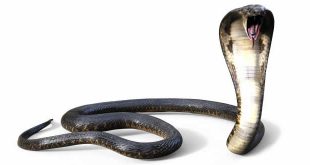 Snapping Turtle — The Snapping Turtle (Chelydra serpentina), more formally referred to as the Common Snapping Turtle when properly distinguished from its larger cousin the Alligator Snapping Turtle, is a large freshwater turtle of the family Chelydridae, and ranges from southeastern Canada south, west to the Rocky Mountains (and beyond, where introduced), throughout Mexico, and as far south as Ecuador. It is also widely referred to as the Snapper.
Snapping Turtle — The Snapping Turtle (Chelydra serpentina), more formally referred to as the Common Snapping Turtle when properly distinguished from its larger cousin the Alligator Snapping Turtle, is a large freshwater turtle of the family Chelydridae, and ranges from southeastern Canada south, west to the Rocky Mountains (and beyond, where introduced), throughout Mexico, and as far south as Ecuador. It is also widely referred to as the Snapper.
Common snappers are noted for their pugnacious dispositions when out of the water, their powerful beak-like jaws and their highly mobile head and neck (hence the specific name “serpentina,” meaning “snake-like”). In some areas they are hunted heavily for their meat, a popular ingredient in turtle soup. Common snappers have lived for up to 39 years in captivity, while the lifespan of wild individuals is estimated to be around 30 years.
Common habitats are shallow ponds, shallow lakes, or streams. Some may inhabit brackish environments, such as estuaries. Common Snapping Turtles sometimes bask – though rarely observed – by floating on the surface with only their carapace exposed, though in the northern parts of their range they will also readily bask on fallen logs in early spring. In shallow waters, common snappers may lie beneath a muddy bottom with only the head exposed, stretching their long necks to the surface for an occasional breath (note that their nostrils are positioned on the very tip of the snout, effectively functioning as snorkels). Snapping turtles are omnivores, consuming both plant and animal matter, and are important aquatic scavengers; but they are also active hunters that prey on anything they can swallow, including many invertebrates, fish, frogs, reptiles (including snakes and smaller turtles), unwary birds and small mammals.
Snappers will also travel extensively overland to reach new habitat or to lay eggs. Pollution, habitat destruction, food scarcity, overcrowding and other factors will drive snappers to move overland; it is quite common to find them travelling far from the nearest water source. Snapping turtles mate from April through November, with their peak laying season in June and July. The female can hold sperm for several seasons, utilizing it as necessary. Females travel over land to find sandy soil in which to lay their eggs, often some distance from the water. After digging a hole, the female typically deposits 25 to 80 eggs each year, guiding them into the nest with her hind feet and covering them with sand for incubation and protection. Incubation time is temperature-dependent, ranging from 9 to 18 weeks. In cooler climates, hatchlings overwinter in the nest.
It is a common misconception that a Snapping Turtle may be safely picked up by its tail, with no harm to the animal; in fact, this has a high chance of injuring the turtle, especially the tail itself and the vertebral column.{fact} A handler must also be wary of injury; snapping turtles are aptly named, as they can snap with amazing speed and power – a large adult snapper can easily bite off a finger or toe. If moving it is absolutely necessary, scooping and lifting the turtle just off the ground with a shovel (especially a snow shovel), if done quickly, may be safest and easiest for all concerned parties.
Lifting the turtle with the hands is difficult and dangerous. Some snappers can – and will – stretch their necks halfway back across their own carapace to bite. Manual lifting (which should be done only if no other options are available) is best accomplished by sliding fingers behind the turtle’s hind legs, with the tail between the hands, and gripping the turtle between the fingers and thumbs. The handler then proceeds to lift the turtle only just off the ground. The turtle will probably squirm and try to dislodge the handler’s hands with its hind legs. Even a small snapper is relatively powerful for its size, with long sharp claws; further, due to their aquatic inclinations, these turtles are often slimy and wet, and they are good at causing prospective handlers to lose their grip. In any case that a snapping turtle must be handled, it is best to have the turtle on the ground or very close. Wild turtles may be covered with a smelly pond slime and may also defecate, urinate, or musk on a handler.
When raised in captivity, a snapper may sometimes become docile and show preference for its keeper. It may show signs of recognizing individual people and will seek out those whose company it tolerates. Some can be taught to obey simple commands, but this can be a long process, as snapping turtles display the stubborn nature that is a defining characteristic of all turtle species. Common snappers kept as pets can become quite corpulent; and even properly fed individuals may be difficult to move without their cooperation – and moving may become essential, as turtles require frequent water changes to remain content and healthy.
 Kids Portal For Parents India Kids Network
Kids Portal For Parents India Kids Network


